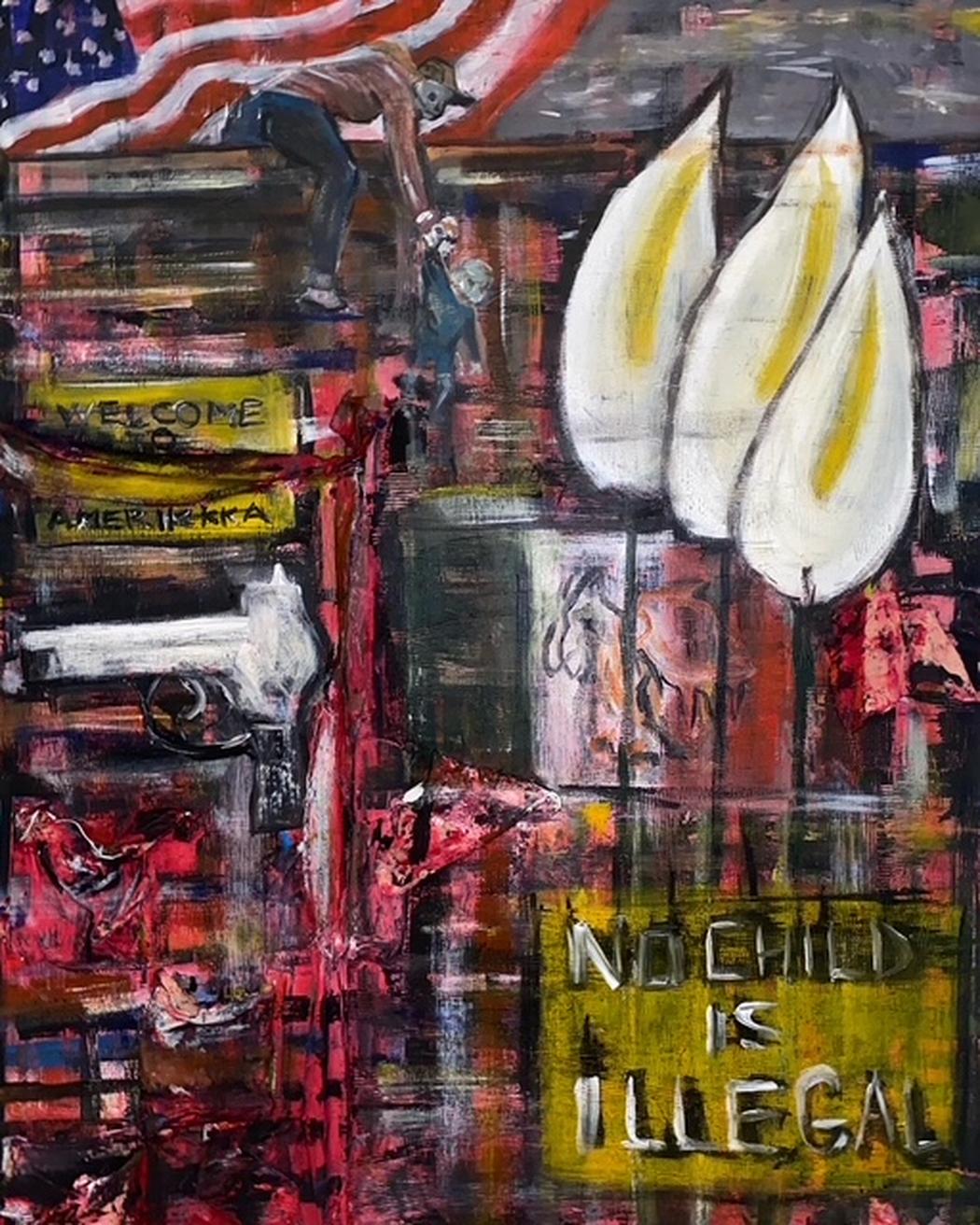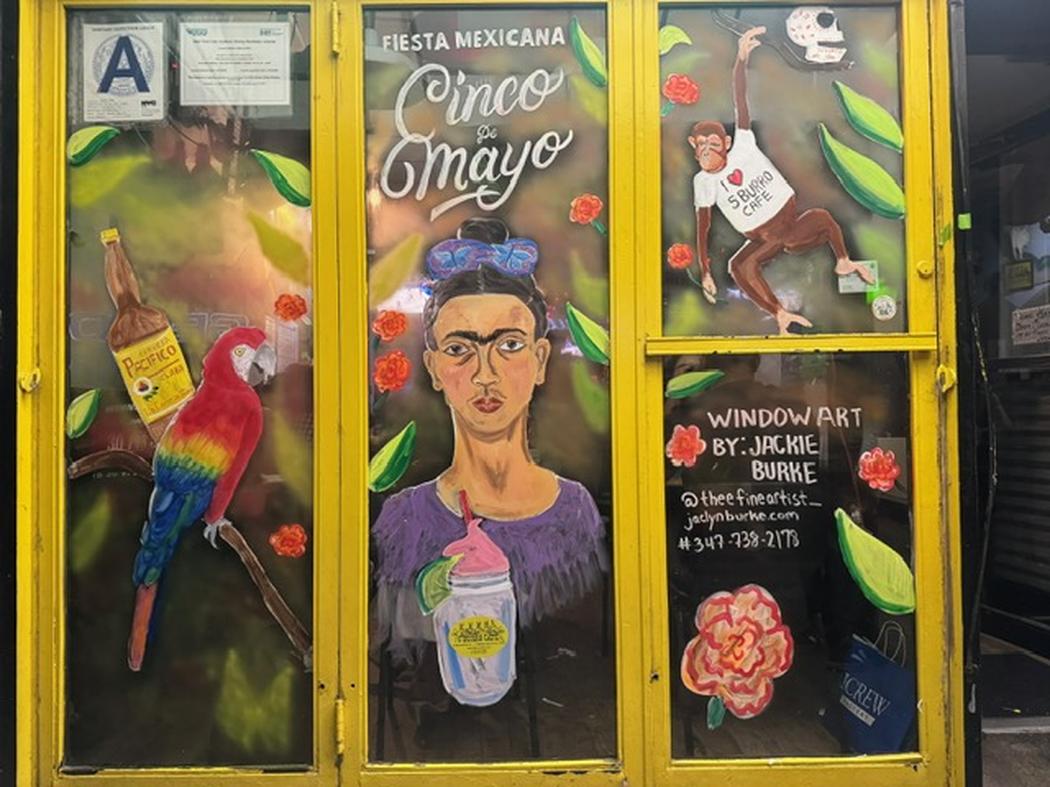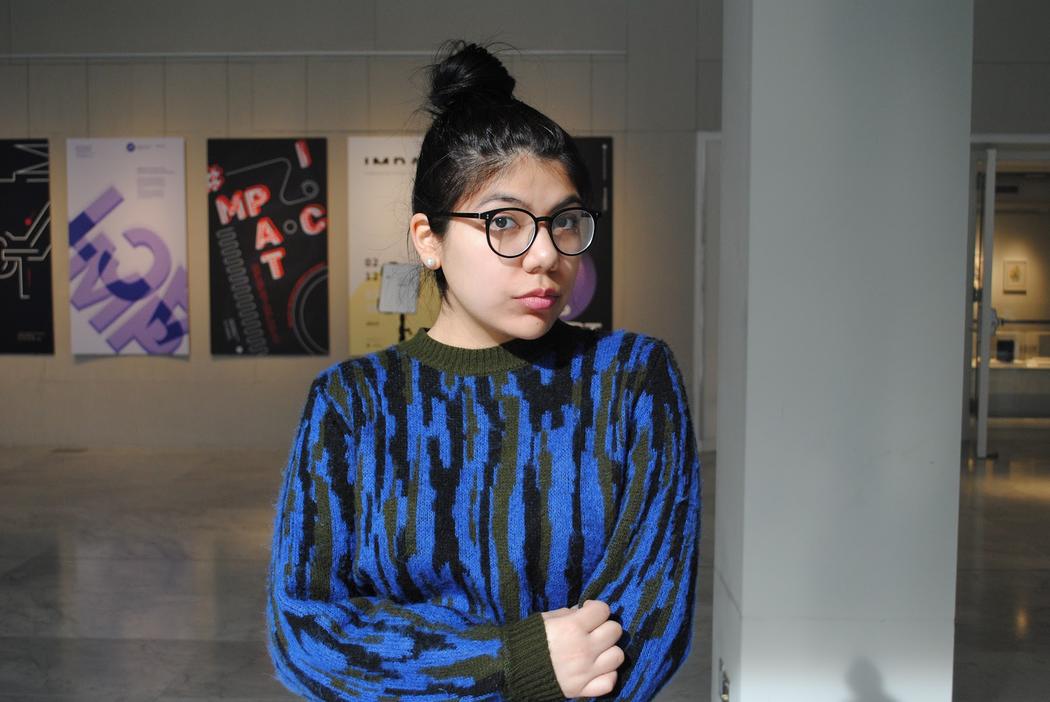Jaclyn Burke
Where do you live: Forest Hills, Queens, New York
Your education: Bachelor of Fine Arts with Minor in Art History from The Fashion Institute of Technology
Describe your art in three words: Personal · Vibrant · Connective
Your discipline: Multi-Media Artist. Uses whichever medium fits the concept, including murals on glass, community art projects, and teaching.
Website | Instagram
You describe your art as a bridge between cultural identity, mental health, politics, and human experience. What early memories or moments first pushed you toward exploring these themes?
From a young age, I was always aware of the spaces between things — between cultures, between emotions, between people, between belonging and not belonging. I grew up surrounded by two distinct sets of traditions: the warmth and spirituality of my Mexican and Indigenous roots, and the discipline and values of my Italian-American upbringing. That tension and harmony fascinated me.
Art became my way to process those contrasts — to find beauty in what felt fragmented. Art was a way for me to express how I felt fragmented, unsure of who I was or who I would become. Later, as I learned more about mental health, the history of art and the importance of reclaiming one’s narrative, my work naturally began to reflect more of my personal healing. Each piece is a conversation between identity and emotion, history and present moment — a visual language that helped me make sense of both myself and the world around me.
Growing up between Mexican/Indigenous and Italian-American traditions, when did you first feel the need to reconcile these different cultural influences in your art?
It really began when I started studying art history at The Fashion Institute of Technology. I realized that much of what I had been taught celebrated European art, so I ventured off and took a speciality class that focused on Mexico and Meso-American Art History. While in that class I learned about iconography, traditions, and stories focused on the history of Mexico. I felt like the gap that had once existed in my identity was finally bridged.
The art of Meso-American, Mexican, Indigenous — are often marginalized or presented as “folk” rather than “fine art”. That realization lit a fire in me. I began to see my own dual heritage not as a conflict, but as a conversation between worlds. My art became the space where those traditions could coexist and inform one another. Where I could honor my ancestors and the family who raised me, while also embracing the creative curiosity that comes from living in between.

Your Nana seems to have played an important role in shaping your cultural awareness. Could you share a specific lesson or story from her that still influences your work today?
My Nana taught me the value of care, both in art and in life. She taught me when you make something, whether it’s a family recipe of the most delicious homemade sauce, Italian almond cookies, how your going to lay out your garden or creating a piece of art you put your soul into it, a piece of your heart. That idea of creating with intention and love continues to guide me everyday whether I’m creating art or just going about my daily life.
Both my grandparents, my Nana and my late Grandfather Jack both taught me how to carry this incredible respect for beauty in the everyday — a tablecloth, ash-tray,old match books or just random trinkets. Spending summers with them while growing up taught me so much. I learned that art isn’t separate from daily life; it is daily life. That’s something I carry into my practice today — the belief that the sacred exists in the ordinary.
Your paintings combine vibrant color palettes with iconographic and spiritual motifs. How do you choose the symbols and colors for each piece?
I’m drawn to color as emotion — each hue carries memory, energy, and meaning. Reds often represent vitality,love and ancestry for me; turquoise and gold feel sacred and protective. I actually spoke about how much I believe colors influence one’s emotions on a podcast called Journeys in Focus.
The symbols I use come from deep research and intuition: Meso-American deities, textile patterns, ancient glyphs, and sometimes dreams or visions I had or ones that come to me while creating. Every symbol I use is intentional — it’s like assembling a personal mythology, one that connects my lineage to contemporary narratives. I want each work to feel like a living altar — vibrant, reflective, and full of spirit.

Many of your works are multi-media. How do you decide which medium (painting, drawing, sculpture) best expresses a particular concept?
The concept usually tells me which form it wants to take. Some ideas demand the immediacy of paint, the gesture of layering of emotions . Others feel more tactile, needing to be built, held, or sculpted.I often begin with drawing because it’s meditative — a way to connect with the essence of my idea. From there, I follow what feels intuitive. Using multiple mediums allows me to give each story the right vessel. Sometimes delicate, sometimes monumental, but always rooted in the message I intend for it to carry.
As a curator, you highlight underrepresented voices. How does curating exhibitions influence or differ from creating your own artworks?
Curating, for me, is an act of service. It’s about creating spaces for others to be seen and celebrated. When I curate, I’m thinking collectively about dialogue, representation, and balance. When I make my own art, it’s deeply personal; it’s a piece of me turned outward for others to view.
But the two practices inform each other. Curating teaches me empathy and awareness. It reminds me that my story is part of a larger ecosystem of voices. Both creating and curating are about connection, storytelling, and visibility just from different vantage points.

What advice would you give young artists from marginalized backgrounds who are looking to tell their own stories?
Your story is your power. Don’t wait for validation or opportunities. Define your worth through the truth of your experience and if there aren’t opportunities or spaces for you create them! It’s really easy to feel like your perspective doesn’t fit within traditional art spaces, but that difference is what makes your work vital.
Lean into your heritage, your emotions, your contradictions. Research your roots, honor your family, and let your art be a love letter to where you come from. And most importantly, build community because our collective voices have the power to shift the world and create new communities and new cultures.


Leave a Reply